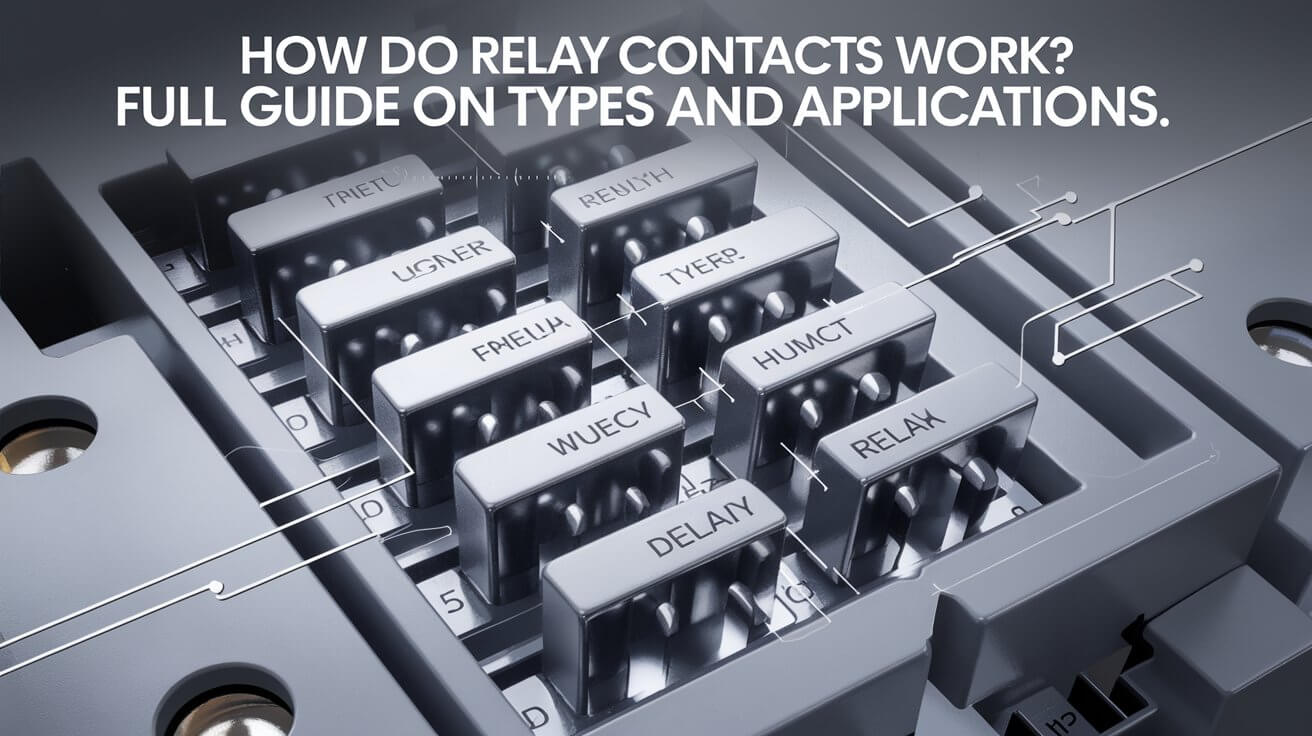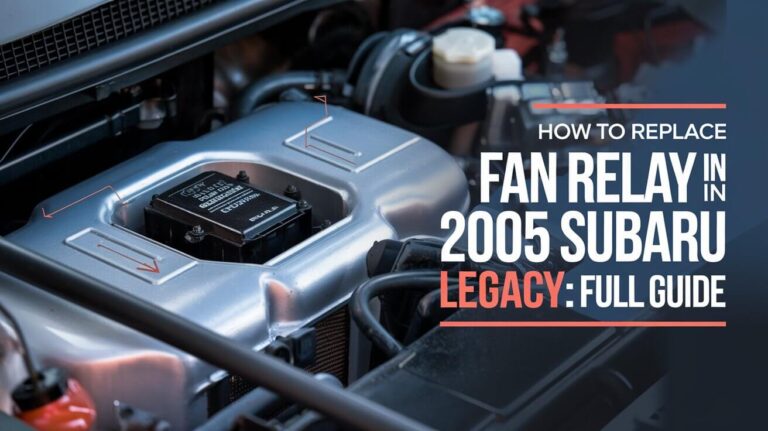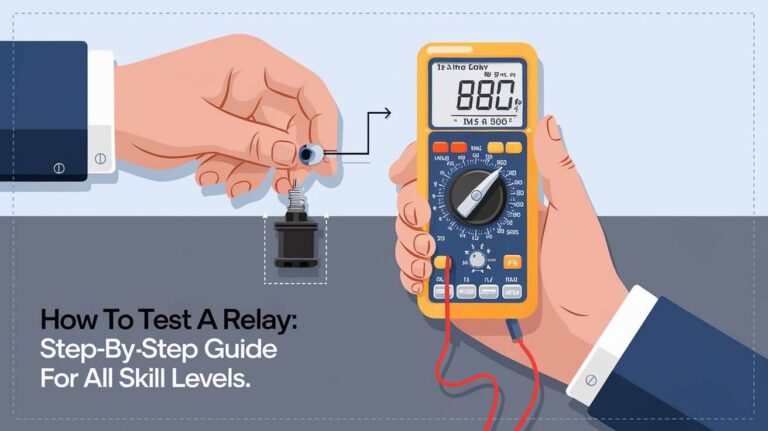How Do Relay Contacts Work? Full Guide on Types and Applications

Relay contacts are essential components in electrical systems, functioning as control mechanisms that allow low-power signals to manage high-power circuits. Relays serve as the connection between a control circuit and a load, switching the circuit on or off. In this guide, we’ll break down everything you need to know about relay contacts, from types and operation to practical applications and future trends.
What Are Relay Contacts, and How Do They Work?
Relay contacts operate as switches within relays, connecting or disconnecting circuits to manage the flow of electricity. A relay typically has two circuits: a control circuit and a load circuit. The control circuit energizes a coil that generates a magnetic field, pulling the relay’s contacts together or apart to open or close the load circuit.
Relays are used in everything from small household appliances to large industrial systems, controlling motors, lighting, safety systems, and much more. By connecting lower voltage control signals with high-voltage circuits, relays play a crucial role in automation and safety across various applications.
Types of Relay Contacts
Understanding the different relay contact types can help you select the right relay for a specific application. Here’s an overview of common relay contacts.
Single-Pole Single-Throw (SPST)
SPST contacts are basic on/off switches with one input and one output. SPST relays can control a single circuit, either completing the circuit (ON) or disconnecting it (OFF). This type is often found in basic switching tasks, like turning lights on or off.
Single-Pole Double-Throw (SPDT)
SPDT contacts have one input and two output terminals, allowing a single circuit to toggle between two different outputs. When the relay is energized, it switches from one contact to the other, useful in applications where a signal needs to be rerouted.
Double-Pole Single-Throw (DPST) and Double-Pole Double-Throw (DPDT)
DPST contacts function like two SPST relays combined, each controlling a separate circuit. DPDT relays control two circuits but can toggle between two sets of contacts, allowing for more complex configurations. These types are commonly used in applications requiring multiple outputs, such as in industrial controls.
Specialized Relay Contacts (Multi-Pole, Double-Break)
Multi-pole relays can control several circuits at once, while double-break contacts open or close two separate connections for increased durability. These specialized contacts are useful in high-power systems that demand greater reliability and load handling.
How Do Relay Contacts Operate?
Relay contacts operate through an electromagnetic mechanism that uses a coil to create a magnetic field, controlling the position of the contacts. Here’s a closer look at how they work.
Electromagnetic Principle
The relay coil, when energized by a control signal, generates a magnetic field that attracts an armature connected to the relay’s contact points. This movement opens or closes the contacts, allowing current to flow in the load circuit.
Mechanical Movement and Contact Points
The magnetic field pulls the armature, shifting the contacts to either complete or disconnect the circuit. When the coil de-energizes, a spring resets the contacts to their original position. This push-and-pull mechanism enables quick switching between connected and disconnected states.
Magnetic Core and Armature
Inside the relay, an iron core concentrates the magnetic flux generated by the coil, enhancing the force on the contacts. The armature, a moving part linked to the contacts, responds to the magnetic force, transferring the control signal’s impact directly to the circuit.
Key Components of Relay Contacts
Several parts contribute to the functionality of relay contacts, each with a specific role in managing electrical current.
Coil and Core
The coil receives a low-power input that powers the magnetic field necessary for switching the relay’s contacts. This component is crucial in determining the relay’s sensitivity and power requirements.
Common (COM), Normally Open (NO), and Normally Closed (NC) Terminals
- Common (COM): Connects to either the NO or NC contact based on the relay’s state.
- Normally Open (NO): Stays open in the relay’s default state; closes when the relay is energized.
- Normally Closed (NC): Stays closed by default; opens when the relay energizes.
These terminals allow for various switching arrangements, enabling multiple applications.
Flyback Diode
A flyback diode is often installed to prevent voltage spikes when the relay deactivates, protecting the contacts and surrounding circuitry from potential damage.
Types of Relays and Their Contact Mechanisms
Different types of relays utilize specific contact mechanisms, each suited to particular applications.
Electromechanical Relays (EMRs)
EMRs are traditional relays with moving parts, offering high durability but subject to wear over time. They are commonly used in applications where slower switching speeds are acceptable.
Solid-State Relays (SSRs)
SSRs use semiconductor technology instead of mechanical contacts, enabling faster switching and eliminating contact wear. SSRs are ideal in high-speed applications, though they may require heat dissipation due to higher operating temperatures.
Time-Delay Relays
Time-delay relays introduce a controlled delay in switching to time-sensitive processes. These are beneficial in automation systems where specific timing is required for opening or closing circuits.
Relay Contact Materials and Their Impact
Relay contact materials significantly affect performance, durability, and environmental compliance.
Common Materials (Silver Nickel, Silver Cadmium Oxide)
- Silver Nickel: Commonly used due to its low electrical resistance and durability.
- Silver Cadmium Oxide: Offers excellent wear resistance, suitable for high-power applications.
Heat and Contact Resistance
Contact materials must withstand heat generated during switching. Silver and other alloy contacts are designed for optimal conductivity while resisting wear from repeated electrical arcing.
Environmental Compliance
With growing environmental concerns, newer materials like silver tin oxide provide a more eco-friendly alternative to cadmium, supporting sustainability in relay production.
Protection and Safety Mechanisms in Relay Contacts
Safety features help prolong relay life and ensure stable performance under heavy loads.
Arc Suppression
Arcing occurs when high current causes a visible spark between contacts. Suppression techniques, like arc quenching, extend contact life and prevent potential hazards.
Flyback Diodes for Contact Protection
Flyback diodes are essential for preventing back electromotive force (EMF) when the relay deactivates, which can damage contacts over time.
Overcurrent and Overvoltage Prevention
Relays are designed to handle specific current and voltage levels. Exceeding these ratings can degrade contacts quickly, so relays often include protective features like fuses to manage abnormal conditions.
Relay Contact Wear and Maintenance
To maintain relay performance, regular upkeep and timely replacement are critical.
Common Wear Factors
Over time, frequent switching, high currents, and environmental exposure can erode contact surfaces, leading to pitting and increased resistance.
Maintenance Tips for Long Life
Periodic cleaning, selecting appropriate power ratings, and monitoring for arcing can extend relay life. Using fine sandpaper to clean the contact surfaces may also prevent sticking.
Replacement Indicators
Signs of wear include inconsistent switching, overheating, and physical wear on contact surfaces. Regular inspection can prevent failure and ensure relay reliability.
Choosing the Right Relay for Your Application
Selecting the appropriate relay depends on factors like power ratings, environment, and specific application needs.
Power Ratings and Load Compatibility
Ensure the relay matches the load’s current and voltage requirements. Overloaded relays can lead to overheating and failure.
Environmental Considerations
For applications in extreme environments, consider relays with temperature and moisture-resistant features to ensure consistent performance.
Application-Specific Relays
Examples include automotive relays designed for rugged use, HVAC relays for climate control, and telecommunications relays with precise signal routing capabilities.
Common Applications of Relays
Relays serve essential functions across various sectors, from industrial to residential uses.
Industrial Control Systems
Relays in manufacturing and robotics systems control complex automation processes, coordinating multiple devices safely.
Automotive Applications
Automobiles rely on relays for efficient control of systems such as lighting, ignition, and HVAC, offering reliable power switching within compact circuits.
Home Appliances
In home devices like washing machines and ovens, relays control power flow to ensure safe operation, activating heating elements, motors, or lighting when needed.
Troubleshooting Relay Contact Issues
Identifying and resolving relay issues can prevent disruptions and extend device life.
Signs of Faulty Relay Contacts
Symptoms like buzzing, clicking, and inconsistent operation indicate possible contact issues.
Diagnostic Steps
Check for proper coil resistance and use a multimeter to test contacts for continuity. Visual inspections may reveal signs of arcing or wear.
Common Fixes and Maintenance
Basic fixes include cleaning contacts, checking for loose connections, and replacing worn-out relays. For critical applications, follow manufacturer maintenance recommendations.
Future Trends and Innovations in Relay Contact Design
Technological advancements are enhancing relay performance and adaptability.
Material Science Advances
New materials like carbon composites and enhanced silver alloys improve contact durability, reducing wear from repeated switching.
Miniaturization and Smart Relays
Compact, efficient designs and programmable relays allow for real-time monitoring, diagnostics, and easier integration into IoT ecosystems.
Wireless and IoT-Connected Relays
Wireless and IoT relays offer remote control and monitoring, streamlining management in complex automated systems.
Conclusion
Relay contacts play a pivotal role in modern electrical systems, managing power flow across various applications. By understanding the types, operations, and maintenance requirements of relay contacts, users can ensure effective and reliable circuit control in their systems. As relay technology advances, we can expect even more efficient, environmentally friendly, and connected relay solutions to emerge in the future.




